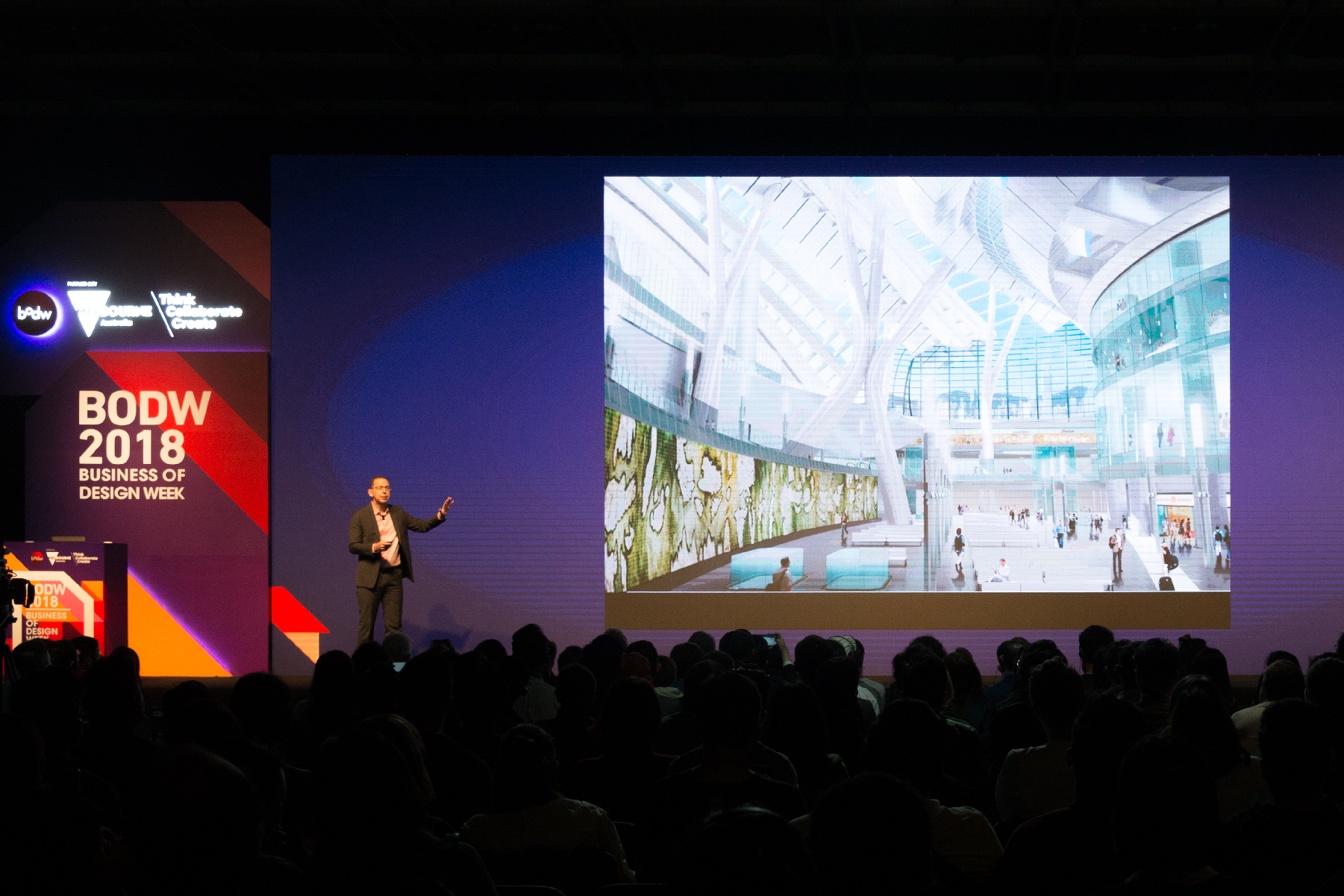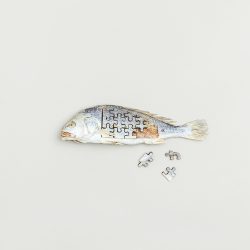THROUGH THE CONTRIBUTION FROM MELBOURNE, LAST YEARS’S BUSINESS OF DESIGN WEEK (BODW) EXPANDED THEIR CREATIVE AREA TO THE CITY VIA THE FIRST BODW CITY PROGRAM
TEXT: NAPAT CHARITBUTRA
PHOTO: NAPAT CHARITBUTRA EXCEPTED AS NOTED
(For English, please scroll down)
ข่าวการเปิดสะพาน Hong Kong-Zhuhai-Macau เชื่อมต่อเกาะฮ่องกงเข้ากับแผ่นดินใหญ่ สร้างความรู้สึกเหมือนกับว่าฮ่องกงกำลังจะกลายเป็นส่วนหนึ่งของแผ่นดินใหญ่ในไม่ช้านี้ การเชื่อมต่อนำมาสู่การเปลี่ยนแปลงแต่การเปลี่ยนแปลงไม่ได้จำเป็นจะต้องเป็นเรื่องน่าหวั่นพรึงเพียงด้านเดียว
ในโลกของการออกแบบ ฮ่องกงถือเป็นจุดเชื่อมต่อระหว่างโลกตะวันออก – ตะวันตกมาอย่างยาวนาน BODW (Business of Design Week) ครั้งแรกเกิดขึ้นในปี 2002 ก่อนที่ 2 ปีต่อมาจึงจะเริ่มมี partner city เข้ามาช่วยหมุนเวียนคอนเทนต์ในทุกๆ ปี ไม่แน่ใจว่าเป็นเพราะประเทศที่มีความโดดเด่นในด้านการออกแบบมีอยู่จำกัดหรือเปล่า จนทำให้รายชื่อประเทศที่เข้ามาเป็น partner city กับ BODW จึงเริ่มซ้ำชื่อกันบ้างแล้ว อย่างไรก็ตาม ด้วยความเปลี่ยนแปลงของโลก ความเปลี่ยนแปลงในฮ่องกง ซึ่งส่งผลต่อการตั้งธีมของรายการแต่ละปี ในความเหมือนของรูปแบบกิจกรรมแต่ละครั้งจึงมีความแตกต่างเป็นของตัวเอง

BODW ปีนี้จัดขึ้นภายใต้ธีม Think · Collaborate · Create โดยมีเมลเบิร์นเป็น partner city ในครั้งนี้ การจัดสรรปันส่วนหัวข้อ conference ใน 5 วันของรายการต่างจากปีก่อน อย่างหนึ่งที่เห็นได้คือการเอาประเด็นเรื่อง technology กลับเข้ามาอีกครั้ง ในแง่นวัตกรรมวัสดุ Arthur Huang ผู้ก่อตั้งและ CEO ของ Miniwiz Co., Ltd จากไต้หวันขึ้นมาพูดถึงสิ่งที่เขาให้ความสำคัญมาตลอดเกือบ 10 ปีที่ผ่านมา นั่นคือ circular economy หรือพูดให้ง่ายก็คือ การนำวัสดุเหลือใช้ในอุตสาหกรรมกลับมาตัดแต่งพันธุกรรมใหม่จนกลับมาเป็นวัสดุอุตสาหกรรมในท้องตลาดอีกครั้ง แนวทางที่หลุดกรอบสถาปัตยกรรมออกมาหน่อยหนึ่งคือ Leah Heiss นักวิจัยและดีไซเนอร์จาก RMIT University กับ health technology projects ขยายความให้เห็นภาพมากขึ้นคือการผสานเทคโนโลยีเข้าไปในเครื่องประดับให้มันมีฟังก์ชั่นทางการแพทย์ไม่ทางใดก็ทางหนึ่ง ตัวอย่างเช่น เครื่องประดับสำหรับผู้ป่วยโรคเบาหวานที่สามารถฉีดอินซูลิน (Insulin) เข้าไปในกระแสเลือดผ่านผิวหนังโดยอาศัยเทคโนโลยีนาโนแทนการฉีดด้วยเข็มแบบเดิม หรือล่าสุดกับเครื่องช่วยฟัง Facett ที่ซ่อนตัวไปกับใบหูได้แนบเนียนขึ้น มีประสิทธิภาพในการขยายเสียงที่ดีขึ้น (ปรับความดังได้จากสมาร์ทโฟน) เธอให้สัมภาษณ์ว่าพยายามเปลี่ยน perception ของเครื่องช่วยฟังจาก “disability ให้เป็น desirability”
ที่กล่าวข้างต้นคือเนื้อหาในช่วง Product & Technology ถ้าจำกันได้ ไฮไลท์ของ BODW ปีก่อนหนีไม่พ้นการขึ้นมาอัพเดทโปรเจ็คต์ใหม่ Tai Kwun Centre for Heritage & Art ของ Herzog & de Meuron ซึ่งตอนนี้สร้างเสร็จเป็นที่เรียบร้อยแล้ว และไม่วายที่ BODW จะถือโอกาสเดียวกันนี้ เปิดพื้นที่ให้ Marc Cansier ผู้ร่วมก่อตั้ง Marc & Chantal ซึ่งเป็นผู้รับผิดชอบการออกแบบ branding และ environmental graphic ทั้งระบบของอาคาร รวมถึงการออกแบบนิทรรศการ ส่วนที่เกี่ยวกับประวัติความเป็นมาของพื้นที่ที่มีการเปลี่ยนผ่านด้านการใช้งานมาหลายยุคหลายสมัย ได้ขึ้นมาพูดถึงโปรเจ็คต์นี้ในอีกมุมมองหนึ่ง

Diabates Jewelry © Narelle Portanier
Marc Cansier บอกกับ art4d ว่า 6 ปีสำหรับโปรเจ็คต์สถาปัตยกรรมอาจดูเป็นเรื่องธรรมดา แต่ในแง่ของกราฟิกดีไซน์และ branding มันเหมือนกับเป็นการวิ่งมาราธอนระยะไกลที่ดูเหมือนไม่มีวันสิ้นสุด ความยากของโปรเจ็คต์นี้คือการออกแบบ wayfinding ให้กับพื้นที่ที่ไม่ได้ถูกออกแบบสำหรับการเปิดให้สาธารณชนเข้ามาใช้งานตั้งแต่แรก (เดิมทีพื้นที่ตรงนี้คือ Central Police Station ที่เป็นทั้งสถานีตำรวจและคุก) และประกอบด้วยกลุ่มอาคารกว่า 22 หลังที่สร้างขึ้นต่างช่วงเวลากัน “ผมรู้สึกเหมือนออกแบบ wayfinding ให้กับเขาวงกตอย่างไรอย่างนั้นเลย” แน่นอนว่าเขาไม่สามารถเปลี่ยนกายภาพของมันได้ ส่วนทางแก้ที่เขาใช้เป็นไดเร็คชั่นการทำงานก็คือ การปรับทัศนคติคนที่เข้ามาในพื้นที่ว่า “นี่ไม่ใช่ห้างสรรพสินค้า” ตั้งแต่แรก “คือคนต้องยอมหลงบ้าง ต้องปืนขึ้นบันได ลงบันได เดินลัดเลาะซอกตึกบ้าง” ดูแล้วเป็นทัศนคติที่น่าสนใจ (ตรงที่มันไม่ตามใจแขกมากไป) อย่างไรก็ตามการหลงทางในที่นี้ก็ไม่ใช่การหลุดเข้าไปในซอกหลืบไร้ทางออกที่ดูไม่ปลอดภัย วิธีการที่เปลี่ยน perception ของ “เดินหลง” กลายเป็น “สำรวจ” คือการทำให้ทุกๆ มุมมีความน่าสนใจ ไม่ว่าจะด้วยการใช้ drawing บนผนังเป็นจุดถ่ายรูปหรือป้ายให้ความรู้ด้านประวัติศาสตร์
อีกโปรเจ็คต์ที่ไม่พูดถึงคงไม่ได้ใน BODW ครั้งนี้ คือสะพาน Hong Kong-Zhuhai-Macau ที่ Naeem Hussain ไดเร็คเตอร์ของ Arup Fellow ผู้รับผิดชอบดูแลการออกแบบ อธิบายถึงรายละเอียดการสร้างสะพานข้ามเกาะที่ยาวที่สุดในโลก บนเวที Plenary II ช่วงเดียวกัน Andrew Mead สถาปนิกหลัก (Chief Architect) และ Thomas Lau ผู้จัดการด้านการออกแบบ HSR ตัวแทนของ MTR Corporation Limited ยังขึ้นมาอัพเดทความคืบหน้าการก่อสร้างสถานี West Kowloon สถานีรถไฟความเร็วสูงที่เชื่อมต่อฮ่องกงเข้ากับจีนแผ่นดินใหญ่
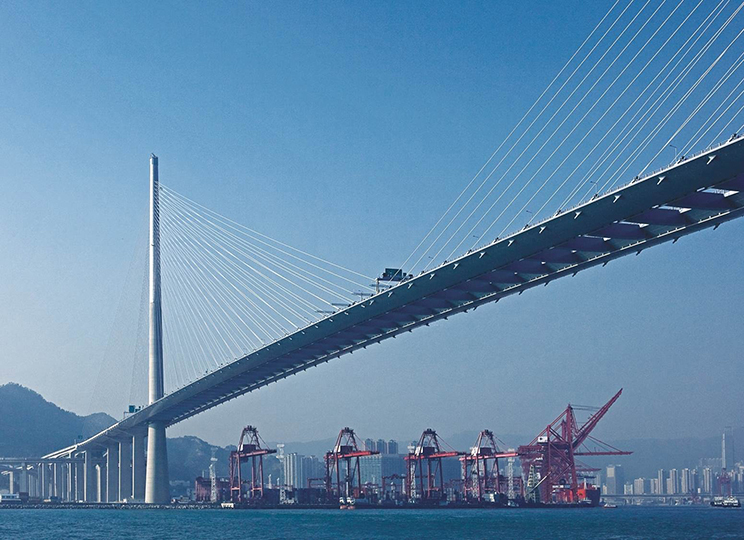
©Arup
ใจความส่วนหนึ่งของการบรรยายครั้งนี้เน้นหนักไปที่การ implement งานศิลปะเข้าไปตามจุดต่างๆ 7 จุดเพื่อสร้างอัตลักษณ์ให้กับสถานีแห่งนี้ สิ่งที่น่าสนใจคือการเอา visual บางอย่างในฮ่องกงมาใช้ไม่ว่าจะเป็น Rilic-486 โดย Om Mee Ai กับโมเสกสีแดง ที่เหมือนกับเป็นภาพจำที่ใครก็ตามที่เคยเดินทางด้วยรถไฟใต้ดินฮ่องกงต้องเคยสังเกตเห็นการหุ้มผนัง (แทบจะทั้งหมด) ภายในสถานีด้วยโมเสกแผ่นเล็กๆ จนเต็มพื้นที่ หรือ Element of Surprise โดย Javin Mo ผู้ถอดแสงไฟนีออนที่ส่องสว่างไปทั่วเกาะฮ่องกงยามค่ำคืนมาแปลงเป็นลวดลายของป้ายไฟบริเวณจุดรอแท็กซี่ หรือ Horizon on the Border / Ponder on the Border โดย Tozer Pak ที่นั่งเรือออกไปถ่ายชายแดนทางทะเลของฮ่องกงทุกๆ ด้าน มองในมุมหนึ่งมันแสดงให้เห็นถึงการเชื่อมต่อแบบ “ไร้พรมแดน” ของฮ่องกง พร้อมๆ กันกับระบุ “ขอบเขต” ที่มีอยู่แม้อาจจะมองไม่เห็นได้ด้วยตาของเขตปกครองพิเศษแห่งนี้
ปีนี้เป็นปีแรกของ BODW City Program กิจกรรมที่กระจายตัวไปตามจุดต่างๆ ของเมืองที่ถูกออกแบบมาให้มีดีกรีความเข้มข้นของเนื้อหาเข้ากับกลุ่มผู้ชมทั่วไป ไม่ว่าจะเป็น งานอินสตอลเลชั่นในเมืองเวิร์กช็อป กิจกรรม open house ของสตูดิโอต่างๆ รวมไปถึงนิทรรศการศิลปะที่ถือโอกาสเปิดตัวเป็นส่วนหนึ่งของบรรยากาศ “สร้างสรรค์” บนเกาะฮ่องกง
อาจจะเป็นเพราะสัมผัสได้ถึงการเปลี่ยนแปลงที่กำลังจะเกิดขึ้นในไม่ช้า การย้อนกลับไปนิยามว่า “อะไรคืออัตลักษณ์ของฮ่องกง” จึงเหมือนเป็นประเด็นหนึ่งที่ถูกนำเสนออย่างต่อเนื่อง ในกิจกรรมย่อยอย่าง deTour ที่จัดขึ้นที่ PMQ ต่อเนื่องหลายปีที่ผ่านมา เราได้เห็น motive ของความพยายามสื่อสารกับคน generation หลังๆ เกี่ยวกับกายภาพของเมืองฮ่องกง วัฒนธรรม อาหารการกิน รวมไปถึง visual language ในยุคสมัยหนึ่งก่อนที่ฮ่องกง (โดยเฉพาะเกาะฮ่องกง) จะกลายมาเป็น international city เต็มตัวเหมือนในปัจจุบัน

Unique Hong Kong Typography
ย้อนกลับไปปีก่อน “LONG TIME NO SEE: A Virtual Encounter with Neighbourly Nostalgia” โดยศิลปินชาวฮ่องกง Bo Law วาดภาพทิวทัศน์เมืองจนเต็มพื้นที่ห้อง และเชิญชวนให้คนดูหยิบสมาร์ทโฟนขึ้นมาส่อง “ภาพอดีต” ที่แสดงผลด้วยเทคโนโลยี AR (Augmented Reality) กัน ในปีนี้ โปรเจ็คต์ลักษณะเดียวกันยังคงถูกจัดขึ้น แต่ที่น่าสนใจที่สุดคงจะเป็นนิทรรศการโดยดีไซเนอร์ Kay Chan และ PMQ Taste Library แต่ก่อนปลาเค็มแทบจะเป็นเมนูประจำโต๊ะอาหารทุกมือของคนฮ่องกง แต่ในปัจจุบันปลาเค็มดูจะกลายเป็นของล้าสมัย ไม่ว่าจะด้วยภาพลักษณ์หรือการเข้ามาแทนที่ของอาหารชนิดอื่นๆ Revive: Salted Fish นำเสนอวิธีการเปลี่ยนภาพลักษณ์ปลาเค็มด้วยการออกแบบบรรจุภัณฑ์ และการแปรรูปปลาเค็มเป็นผลิตภัณฑ์อื่นๆ ที่เหมาะกับการรับประทานในยุคสมัยนี้
ยังมีอีกหลายกิจกรรมใน BODW City Program ที่ไม่ได้กล่าวถึงตรงนี้ ดูๆ ไปแล้วก็ไม่ต่างอะไรกับเมืองไทยเท่าไหร่ ที่เทศกาลออกแบบพยายามเข้าหากลุ่มผู้ชมทั่วไปมากขึ้น อย่างไรก็ดี สิ่งที่เราคิดว่า BODW มีก็คือ community ผู้สนใจด้านการออกแบบอยู่ในมือเป็นฐานก่อนที่จะขยายขอบเขตออกไปหาผู้ชมกลุ่มอื่นๆ ถ้ามองดูผ่านๆ อาจจะเป็นประเด็นไม่สำคัญประมาณว่า “ทำไมเราถึงไม่ทำสองอย่างไปพร้อมๆกันล่ะ” แต่ถ้าพิจารณาดูแล้ว มันมีความต่างที่มีนัยสำคัญอยู่เหมือนกัน ความหนักแน่นของเนื้อหาใน conference นั้นทำให้พันธกิจในด้านการพัฒนาความรู้นั้นถูกเติมเต็ม และทำให้ agenda ในการสื่อสารกับผู้คนกลุ่มอื่นๆ ชัดเจนจนสามารถ shift ไปพูดเรื่องอื่นๆ หรือเปิดพื้นที่ให้หน่วยงานอื่นๆ มาแจมได้อย่างเต็มที่ ก็ต้องลองมาดูกันว่า BODW City Program ปีต่อไปจะเปลี่ยนไปในรูปแบบไหน เช่นเดียวกันกับเทศกาลออกแบบในประเทศไทยว่าจะกลับมาให้ความสำคัญกับพันธกิจด้านการพัฒนาความรู้ด้านการออกแบบหรือไม่


The opening of the Hong Kong-Zhuhai-Macau Bridge that connects Hong Kong to Main Land China accents the union between the two territories. Such a connection will definitely bring about changes, however, not all changes are necessarily harrowing.
In the world of design, Hong Kong has long been the midpoint where the East meets West. The first BODW (Business of Design Week) took place in 2002, before partner city ensued two years later, adding new con- tents to the yearly event. Perhaps it’s the limited number of countries with strong and distinctive design industries, we aren’t exactly certain, but we’re starting to see some repetitions in the list of BODW’s partners city. Even so, with the fast-paced world we live in coupled with the changes that Hong Kong has gone through in the past several years have been an affluent resource for BODW and its themes as well as programs and activities. Each BODW, therefore, has been able to develop its own flair and flavor.
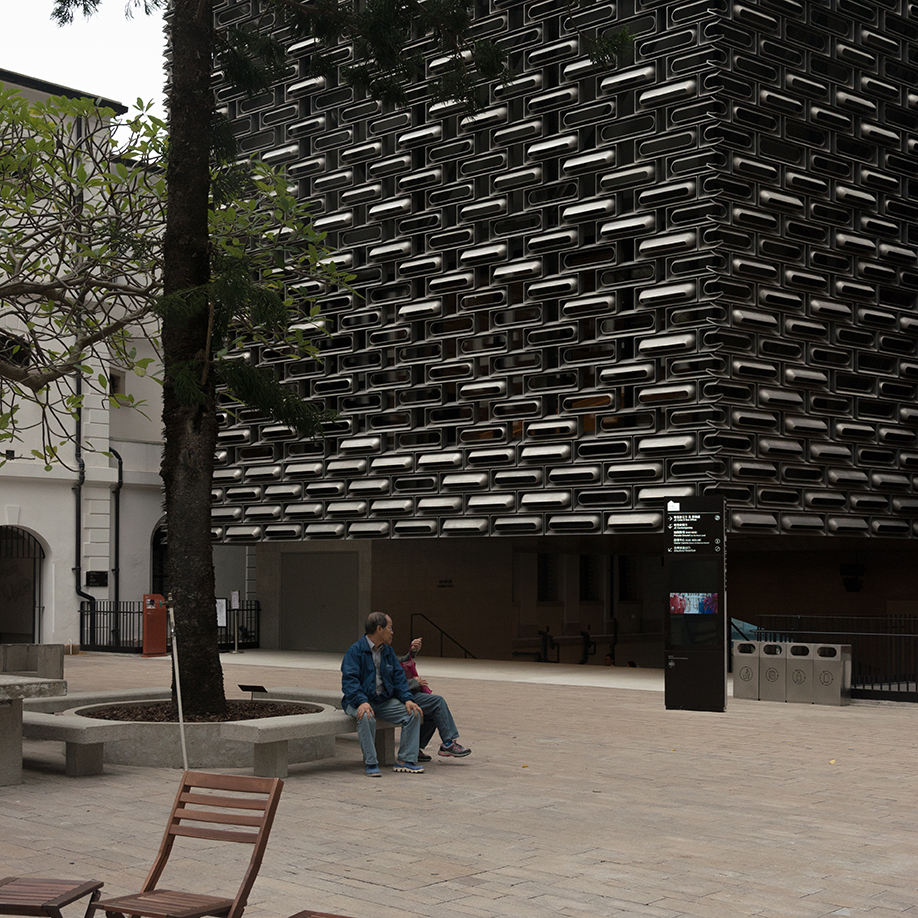
This year’s BODW is organized with ‘Think · Collaborate · Create’ as the theme and has Melbourne as the partner city. The line up for the five days of the conference is different from previous years since the topic of Technology’ is brought back for discussion. For material innovation, Arthur Huang, founder and CEO of Miniwiz Co., Ltd from Taiwan takes the stage and speaks about circular economies, this is one of the things that he has prioritized throughout almost 10 years of running his business operation. Simply put, a circular economy is the re-engineering the DNA of scrap materials from industrial production into usable and valuable industrial materials in the market. In the meanwhile, Leah Heiss, a researcher and designer from RMIT University moved away from the architectural aspect and give a talk about her health technology projects, which are essentially the combination of technology within jewelry pieces, enabling them to contain medical functionalities. For instance, a piece of jewelry that is designed for diabetic patients which can inject insulin into the bloodstream via skin using NANO technology instead of having to use a syringe. Another interesting piece is the hearing-aid tool that blends itself to a human’s ear more seamlessly than other devices, with a more efficient voice amplification method (volume that can adjusted via smartphone). In an interview, Heiss talks about her attempt to change the perception of hearing-aid tool from ‘disability to desirability’.
The aforementioned pieces are the contents from the Production & Technology section of the event. If anyone remembers, the highlight of last year’s BODW was the latest update of Herzog & de Meuron’s Tai Kwun Centre for Heritage & Art. With the project now fully com- pleted, BODW opens the stage for Marc Cansier, the co-founder of Marc & Chantal. This is the studio responsible for the branding and environmental graphic of the entire building, the curatorial program of the exhibition about the history of the site and the many roles and functionalities the place has performed, and they’re able to talk about the project from another perspective.

The atmosphere inside JC Contemporary
Marc Cansier told art4d that a timeframe of 6 years for an architectural project may seem perfectly normal, but as a graphic design and branding standpoint, such an extended period of time seems like an endless marathon. The challenges lie in the design of a way-finding system for a space that wasn’t initially designed to accommodate the public (originally the site was home to the Central Police Station and prison). In the meantime, the 22 buildings in the program were constructed at different times. “I feel like we were designing a wayfinding system for a maze or something like that.” With the physical structures of the buildings remaining unchanged, the solution that had to come about was to shift the direction of the project to adjust people’s attitude towards the entire program as they gradually learn that this place isn’t a shopping mall to begin with. “People will get lost. They will have climb up and down stairs, go around and go through small walkways between buildings.” It sounds like an interesting approach (in the way that the design doesn’t tend to overly accommodate the users). Nevertheless, being lost in this place isn’t the same kind of feeling of wandering around in a shady back alley. By changing the perception of ‘being lost’ to ‘exploring and discovering’ the spaces, every part of the program becomes interesting whether they’re drawings on the walls for a little snap for Instagram or having a look at informative signs about the history of the place.

Another project we cannot not talk about at this year’s BOWD is the Hong Kong-Zhuhai- Macau Bridge that has Naeem Hussain, the director of Arup Fellow who is responsible for the design. Hussain talks in detail about designing the world’s longest bridge. Over at the Plenary ll stage, Andrew Mead, Chief Architect and Thomas Lau, Design Manager- HSR of MTR Corporation Limited give us the latest updates on construction details of the West Kowloon station, the high-speed train station that will connect Hong Kong to Main Land China.
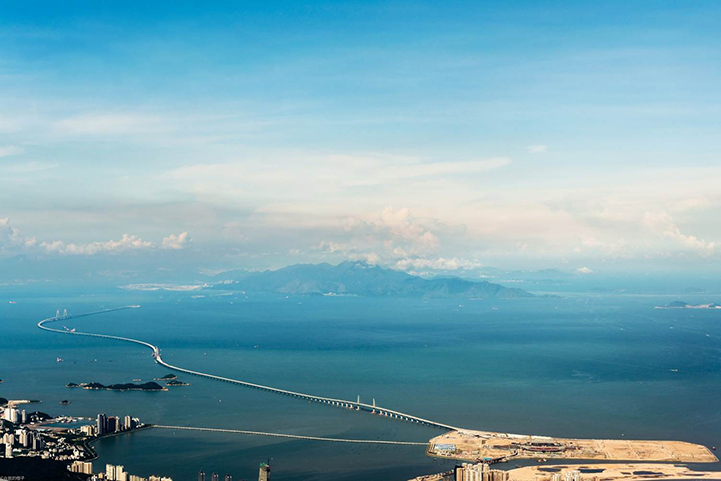
©Arup
Part of the lecture puts a great deal of emphasis on the implementation of pieces of art throughout the 7 venues with the hope of bringing a distinctive identity to the station. What’s particularly interesting is the incorporation of certain visuals with close association to Hong Kong, such as the Rilic-486 by Om Mee Ai and the red mosaics. For most people who have visited or used the Hong Kong sub- way, would notice how the walls of every train station are cladded with colorful mosaic tiles.
Element of Surprise by Javin Mo showcases the fascinating neon lights of Hong Kong at night and transforms them into the pattern of taxi waiting areas. Horizon on the Border/ Ponder on the Border, Tozer Park took a boat ride to take pictures of every angle of Hong Kong’s aquatic borders. In a sense, the work conveys the borderless connectivity of the island while defining the existing yet invisible boundaries of the special territory. This marks the first year of the BODW City Program, the activities which are dispersed to various venues in the city, purposefully designed with content of an intensity that corresponds to the audiences, mainly consisting of the general public. The program includes installations in various urban spaces, workshops, open house activities of local studios, including art exhibitions launched as a part of Hong Kong’s creative atmosphere.

With change being imminent and discernable, the issue about going back to redefine Hong Kong’s identity has been consistently included in the dialogue. Through activities such as detour held at PMQ for several consecutive years, we have witnessed the attempts to communicate with people from the younger generations about the physicality of Hong Kong as a city, including its cultures, food and visual language in the time before Hong Kong (Hong Kong Island in particular) becomes a full-blown international city.
Last year, “LONG TIME NO SEE: A Virtual Encounter with Neighbourly Nostalgia” by Hong Kong artist, Bo Law, filled the exhibition space with a painting of the city’s landscape and invited viewers to look at the past images of the island that were displayed using AR (Augmented Reality) technology. This year, projects of similar nature are also being held, but the most interesting one goes to the designer Kay Chan and PMQ Taste Library. Salted fish used to be basically considered a mandatory dish in everyday meals for Hong Kong locals. The dish, however, seemed to grow more obsolete whether it’s because of the image it held or due to the emergence of new food and tastes. Revive: Salted Fish proposes a way of redesigning the image of salted fish through packaging design as well as the development of different ingredients into other dishes that are more fitting to the taste of modern-day people.
©Ching Ho Yin Photography
There are several other activities featured as a part of BODW City Program that we cannot share with you just yet, but in general, the event isn’t much different to what’s happening in Thailand. Design festivals are trying to approach and consider the general public more than they have ever been. Nevertheless, one thing that BODW has in their hands is, a community of design enthusiasts, which serves as a foundation that allows for it to reach a wider audience more effectively. Such issues may have been brushed off and called insignificant if superficially ob- served, especially with remarks such as ‘why can’t we do both at the same time?’, but if we really think about it there are significant differences to be considered. The intensity of the content coming out from the conference will allow for the mission to fully develop the body of knowledge, thus allowing agendas to be communicated to different audiences more effectively. Once that is a success, the conservation can be shifted towards other issues to be discussed and for other players to fully participate. It remains to be seen how will BODW City Program will change the next year. The same goes for all the design festivals in Thailand and whether they would be able to go back and shift the focus towards the development of design knowledge.

